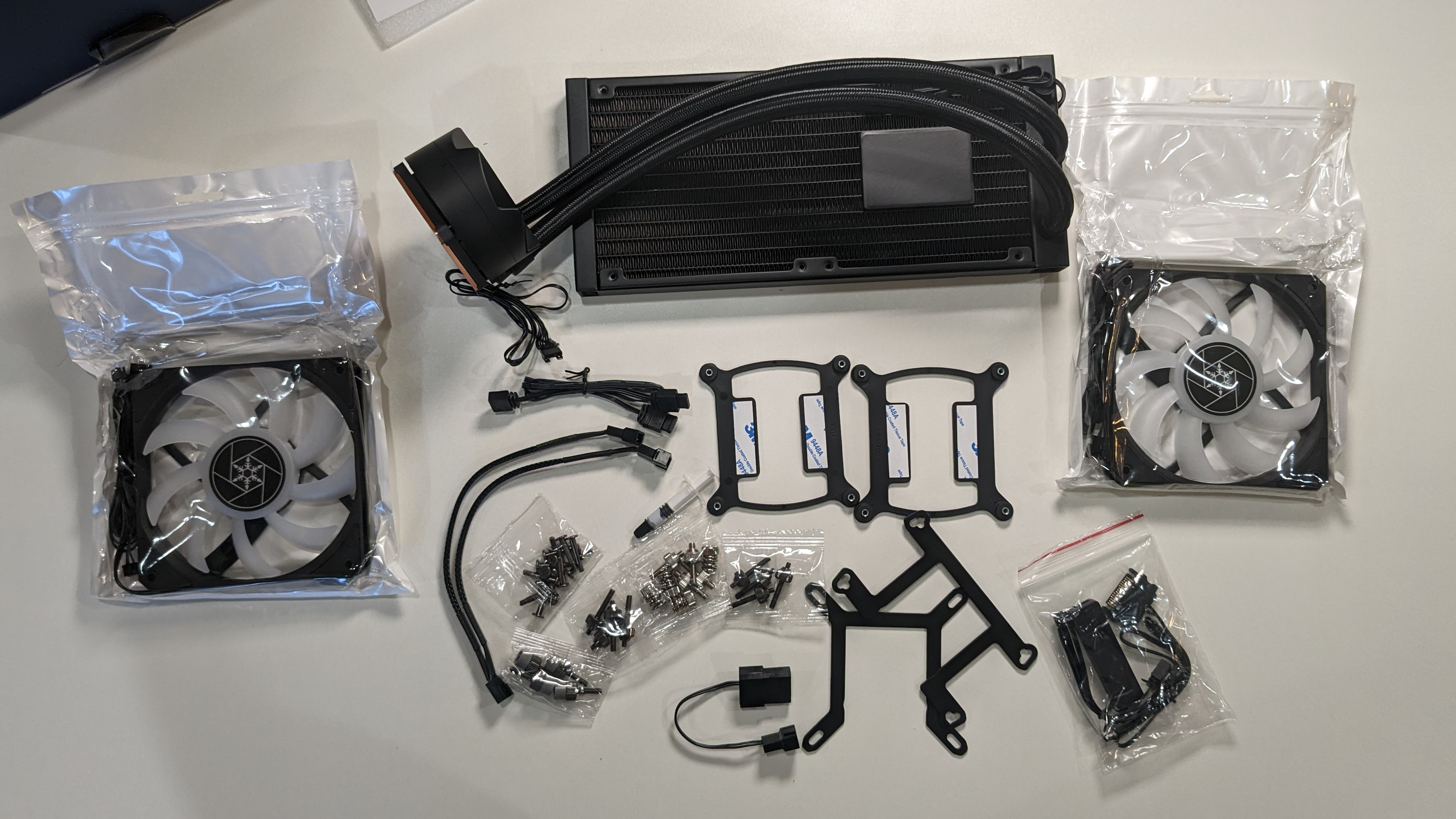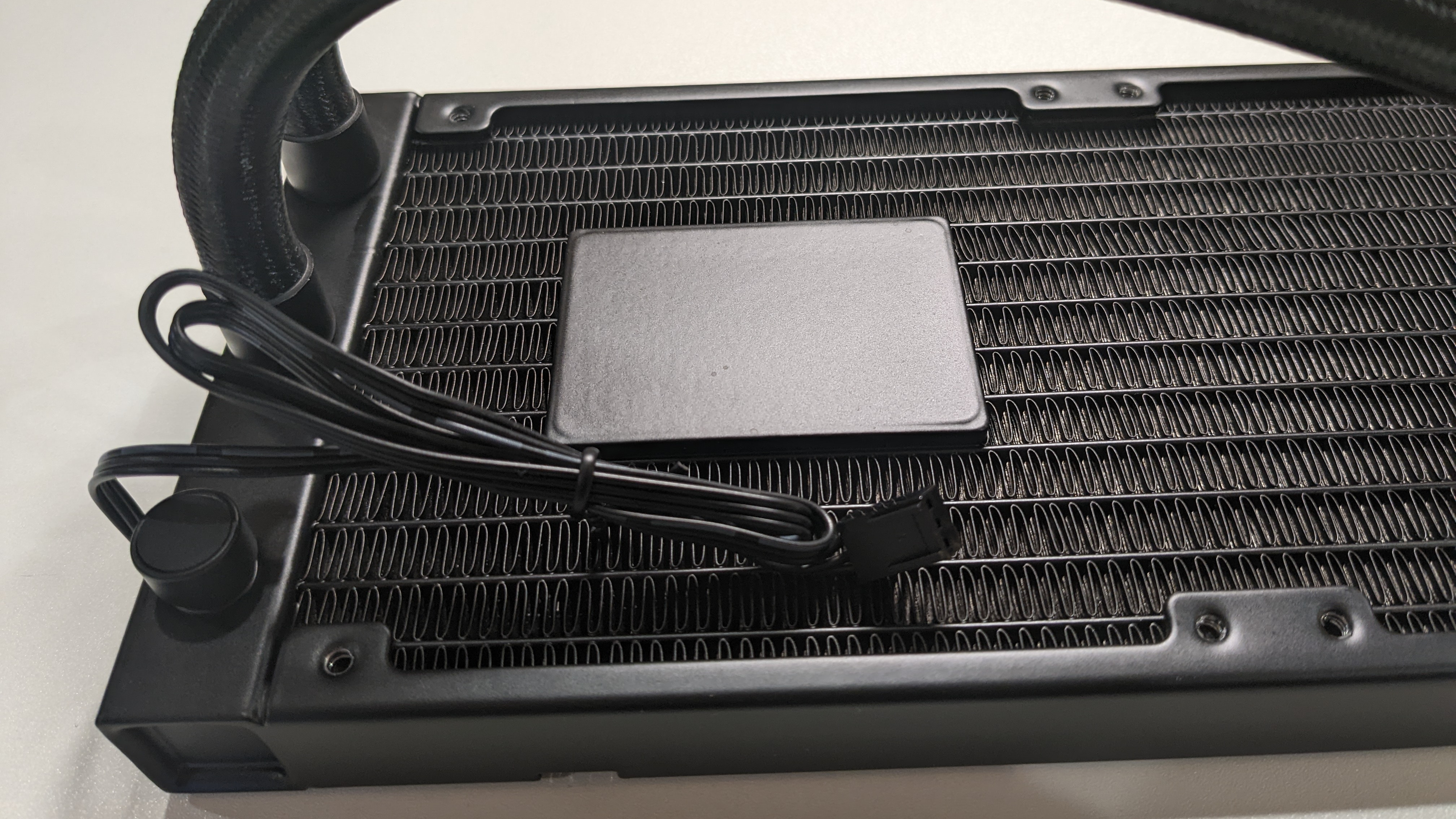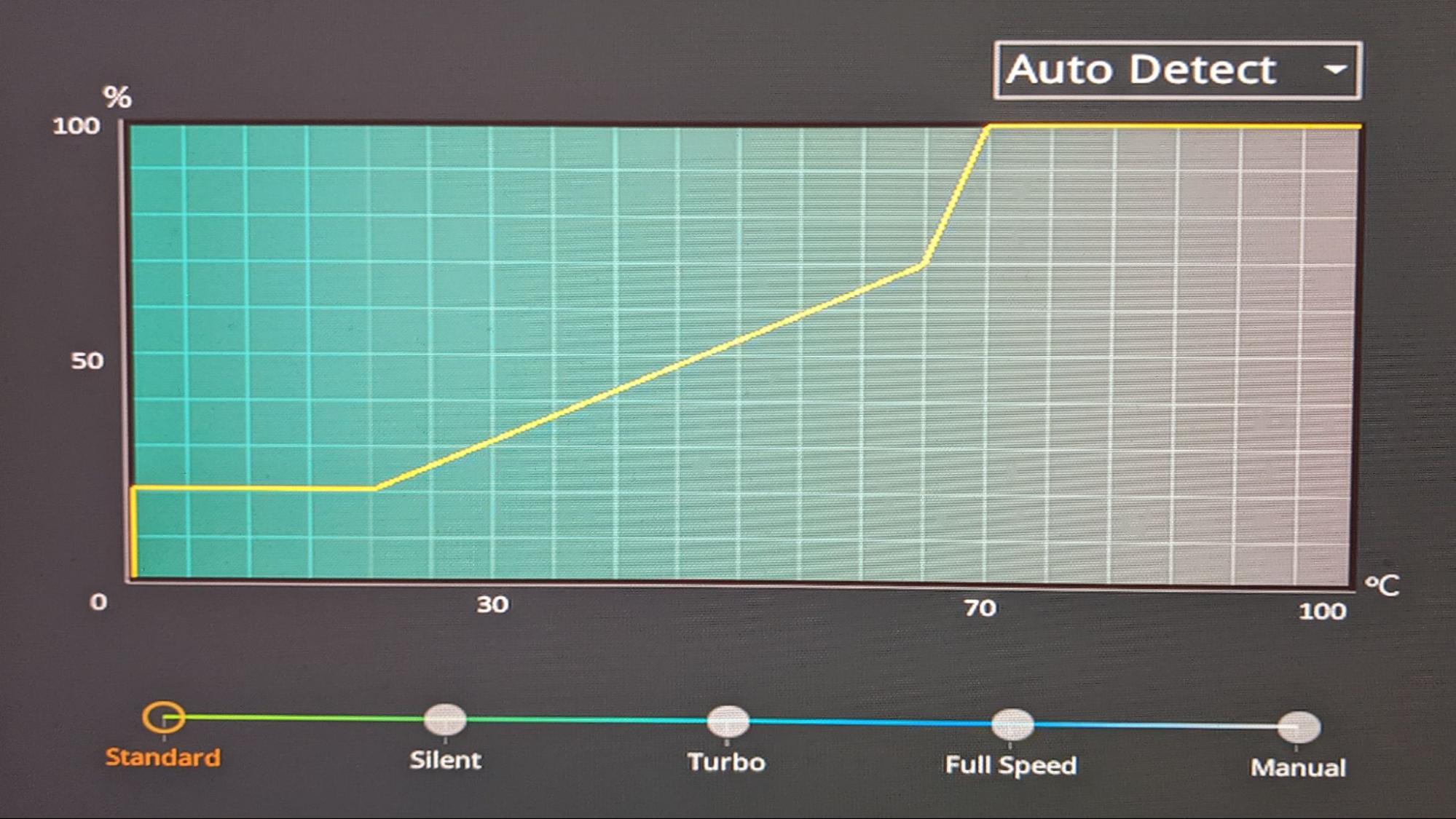Tom's Hardware Verdict
SilverStone’s VIDA 240 Slim AIO has a high thermal capacity, capable of cooling loads of up to 285W when paired with Intel’s i9-13900K, while taking up less room than most competing AIOs inside a case. But it runs a bit loud in the hottest of workloads.
Pros
- +
Slim 240mm radiator fits more SFF cases
- +
Handles up to 285W loads with Intel’s i9-13900K
- +
Won’t get in the way of your tall RAM
Cons
- -
A bit noisier than other units
- -
Only a 2-year warranty
Why you can trust Tom's Hardware
SilverStone has been churning out coolers, power supplies, expansion cards, and other PC equipment since its founding in 2003. The company is perhaps best known for its computer cases, like the SFF Sugo 14. But it also often offers niche products, like the SFF-focused Hydrogon H90 ARGB cooler we recently reviewed.
Here we’ll be looking at an SFF Cooler from SilverStone, the VIDA 240 Slim AIO – and giving it quite the challenge by pairing it with Intel’s Core i9-13900K. Will it wither under the heat of a high-TDP CPU, or will it rise to the challenge and possibly even earn a spot on our Best CPU Coolers list? We’ll have to put it through testing to be sure, but first lets look at the specifications from SilverStone.
Cooler Specifications
| Cooler | Silverstone VIDA 240 Slim |
| MSRP | $124.99 USD |
| Radiator Dimensions | 120(w) x 22(H) x 275(D) mm |
| Radiator Material | Aluminum |
| Socket Compatibility | Intel 115x/1200/1700/2011/2066 |
| AMD Socket AM4/AM5 | |
| Base | Copper |
| Max TDP (Our Testing) | ~285W |
| Warranty | 2 years |
Packing and Included Contents
SilverStone’s VIDA 240 Slim comes in a somewhat small box, with plastic, foam and cardboard used for protection of the inner contents.
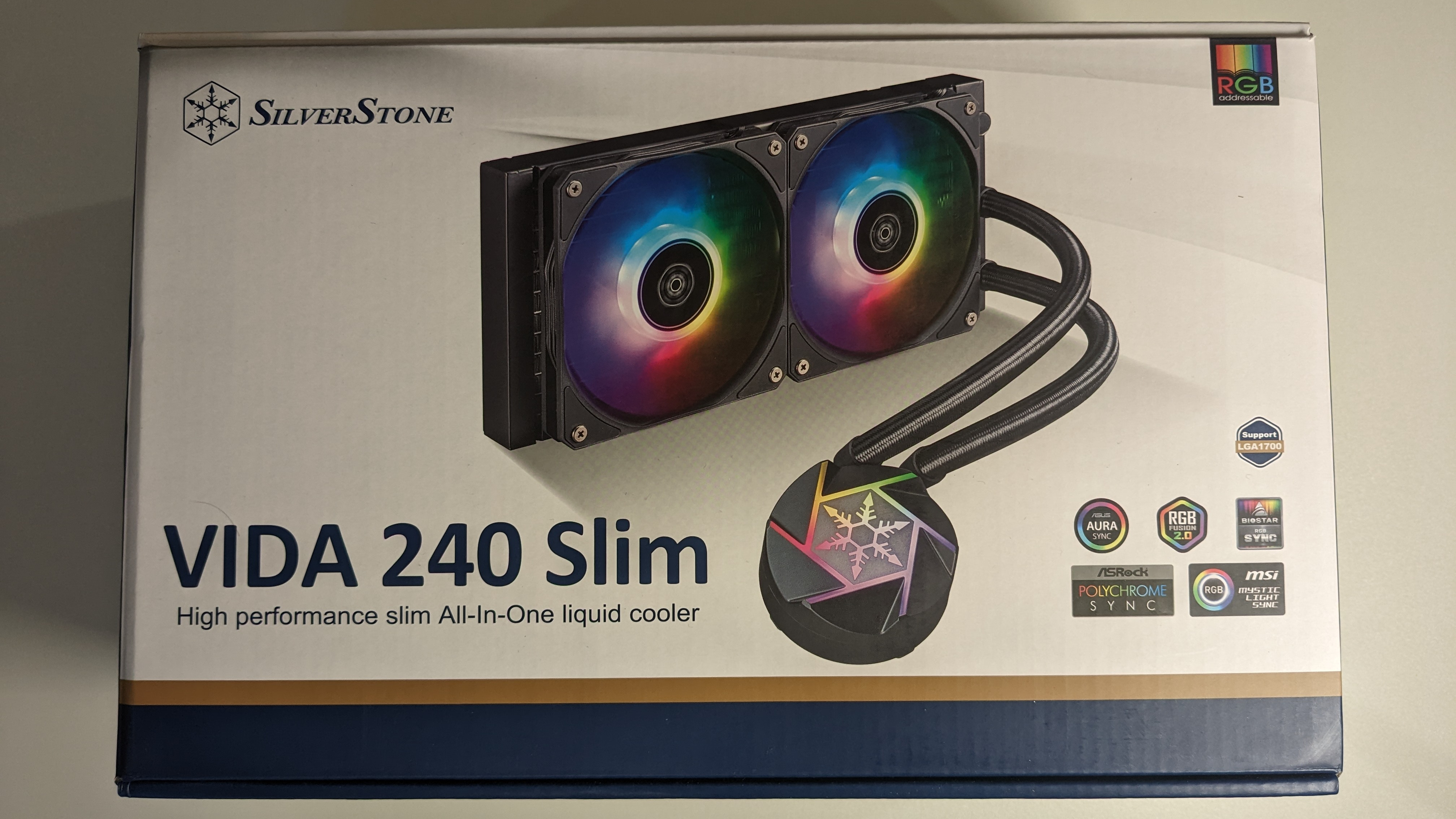
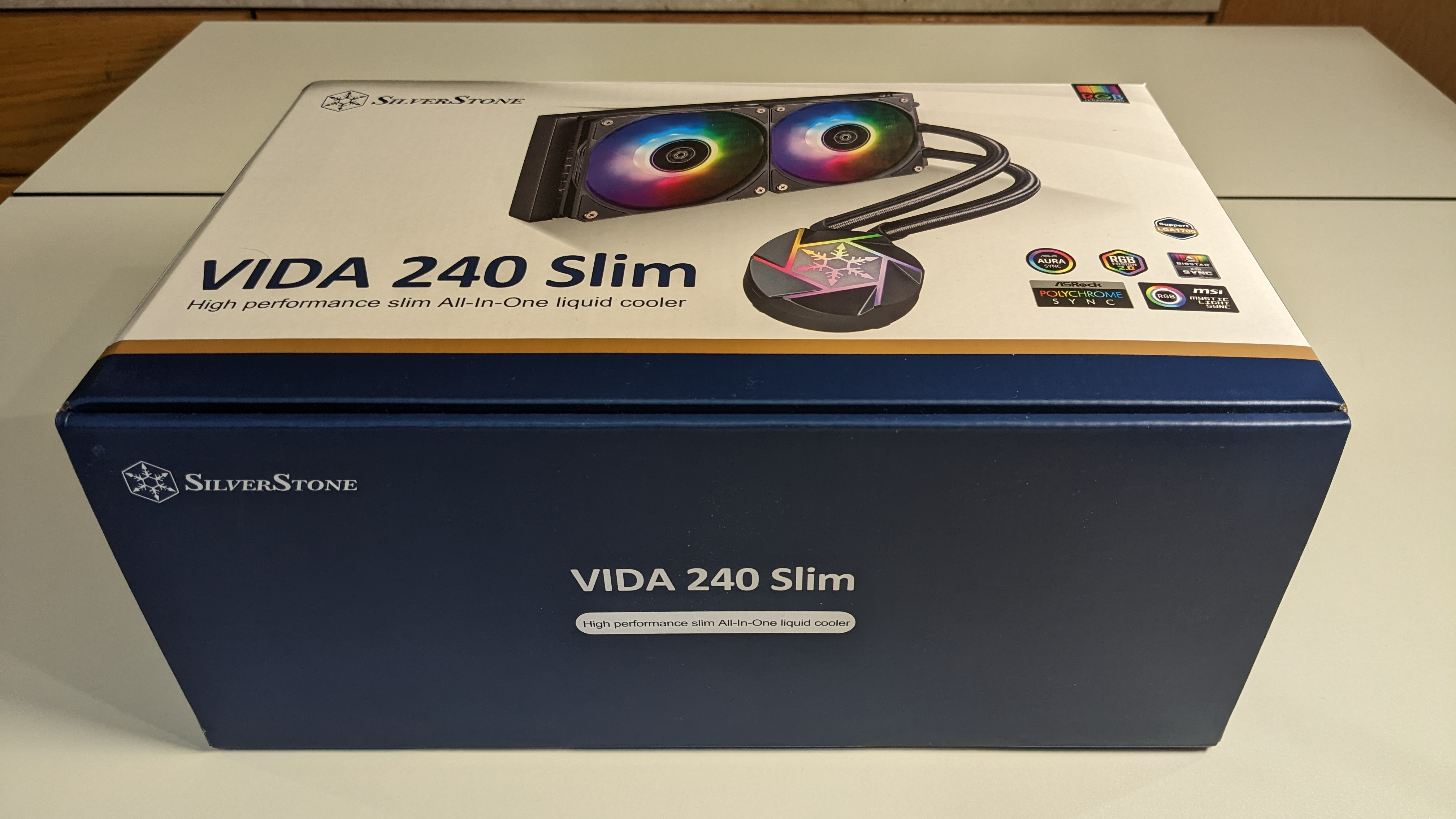

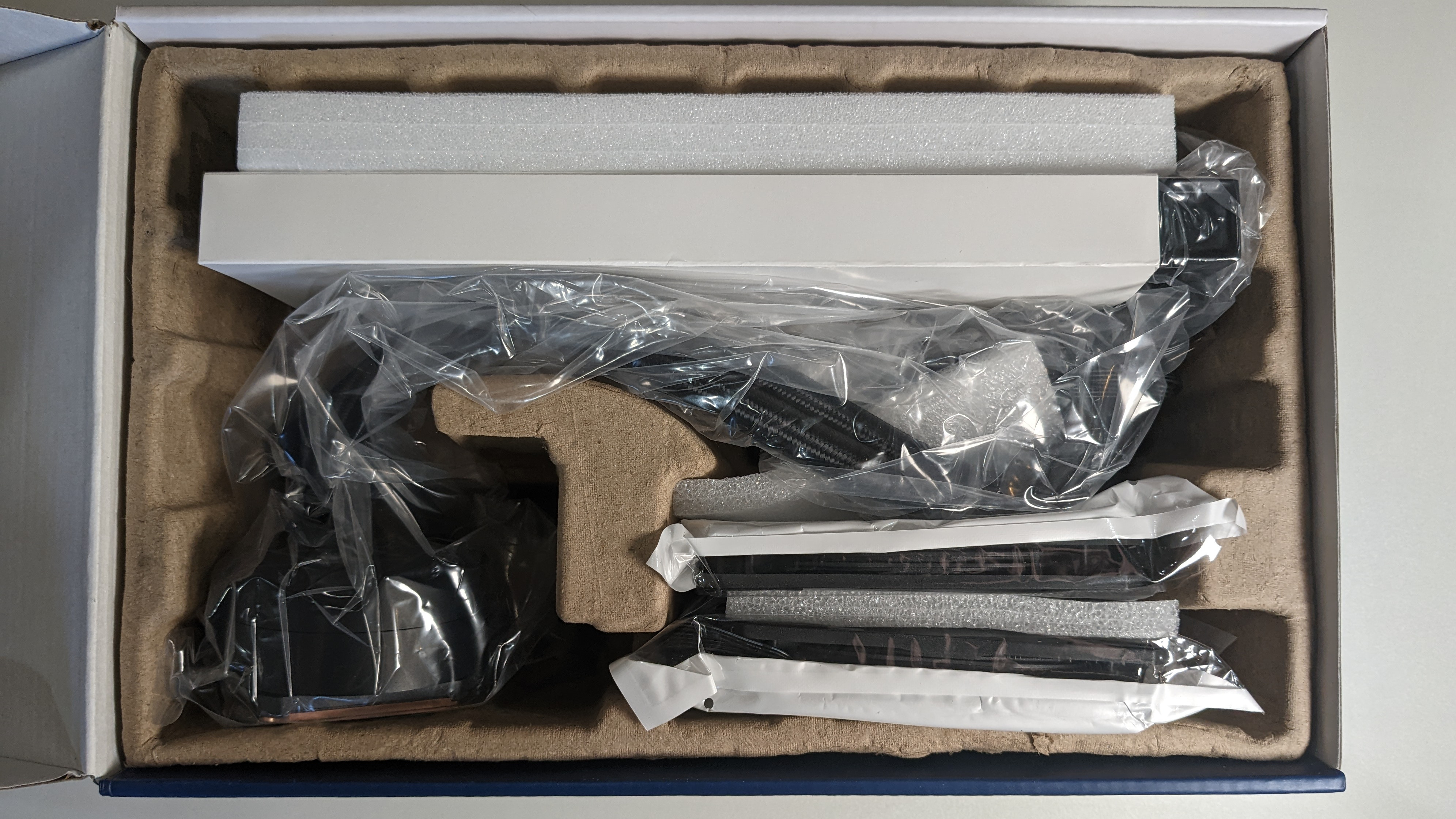
Included with the package are the following:
- Slim 240mm Radiator & CPU Block
- 2x Slim 120mm fans
- Mounts for Intel & AMD platforms
- Hardware ARGB controller
- ARGB & Fan Splitters
- Thermal Paste
Installation
Installing the VIDA 240 Slim was fairly simple. To begin, press the backplate to the motherboard and secure it by screwing in the standoffs. Next, apply the included thermal paste from the syringe to your CPU, then mount the CPU block and secure it with the included screws.
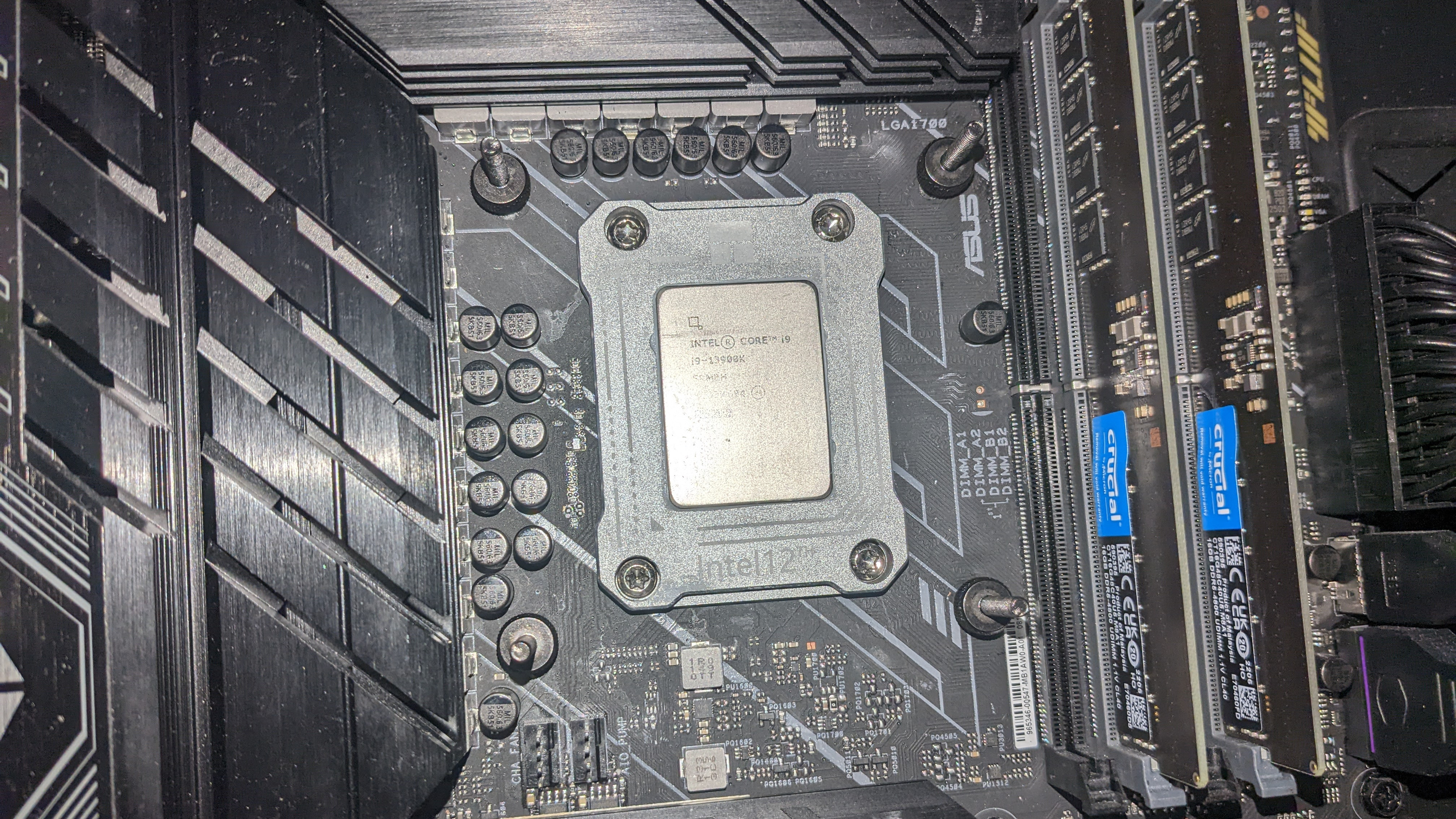
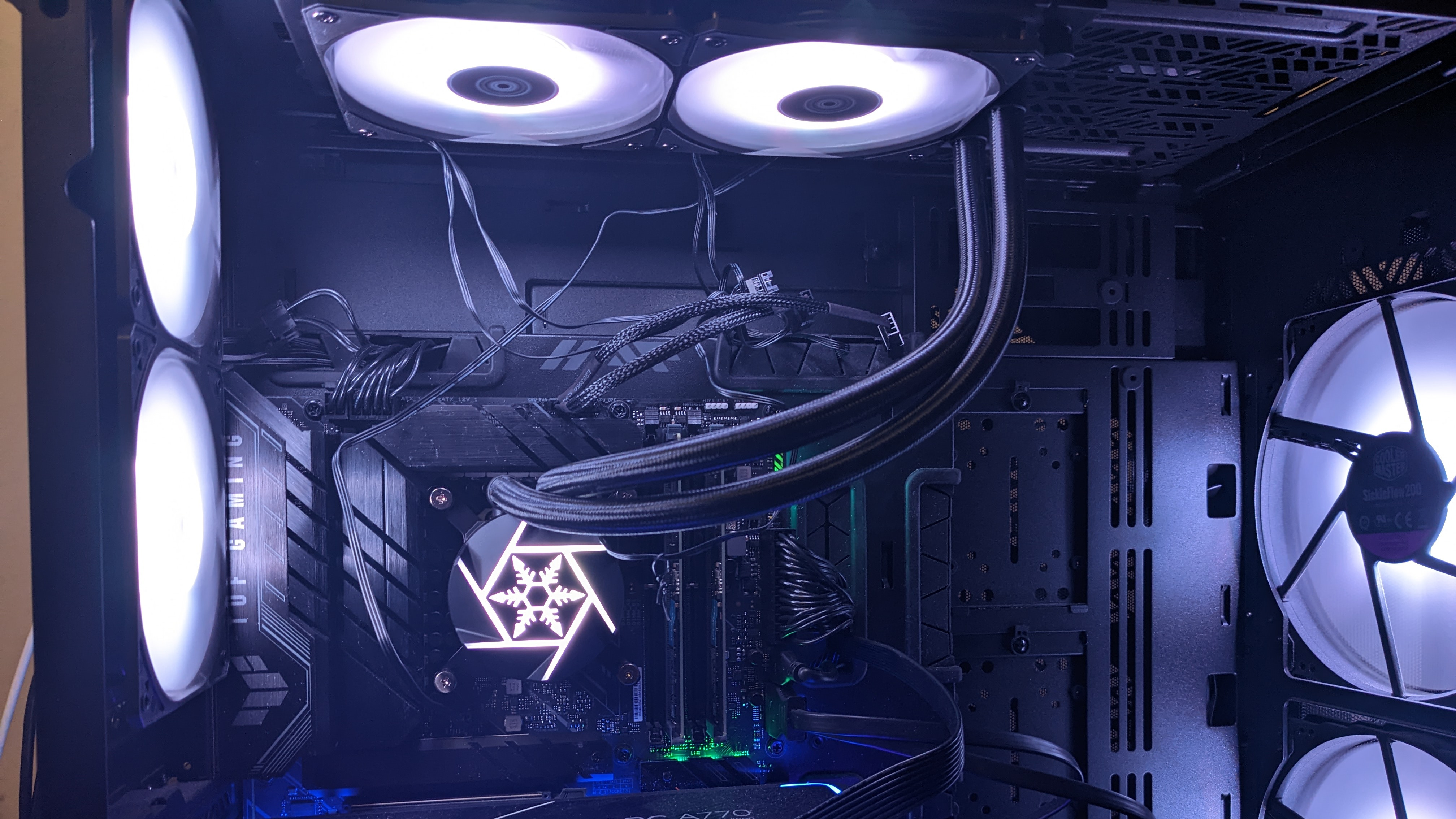
Features of the VIDA 240 Slim
Hardware ARGB Controller
The VIDA 240 Slim includes a hardware ARGB controller, which allows you to change the lighting settings of the fans and CPU block of the cooler with the click of a button - no need to download and install potentially buggy and bloated software!
Get Tom's Hardware's best news and in-depth reviews, straight to your inbox.
Slim profile for SFF systems
The VIDA 240 Slim features a 22mm-thick radiator and 16mm-thin 120mm fans, for 38mm total thickness. The cooler is designed to achieve maximum potential cooling performance in space-constrained systems.
Radiator-integrated pump, user-refillable design
Most liquid coolers today are based on Asetek designs which have the pump included in the CPU block. But Silverstone’s AIO features a unique three-phase, six pole pump motor integrated within the radiator. In theory, this design reduces overall noise levels.
Next to the pump, below the radiator tubing, is a refill port. This allows a user to service and refill the AIO without having to send it to the manufacturer for repair. In most cases you shouldn’t have to do this unless you hold onto this cooler for several years over multiple builds, but it’s nice to have the option.
Rotatable ARGB CPU Block


The CPU block can be rotated, so that the orientation can be aligned to the preference of the user, or just to avoid bumping into buly RAM sticks.
VIDA series fans
There’s more to a cooler than just the heatsink and radiator. The bundled fans have a significant impact on both cooling and noise levels. Included are two slim 120mm fans, designed with nine pressure optimized blades for high static pressure and maximum airflow.
| Dimensions | 120 x 120 x 16 mm |
| Fan Speed | 300-1800 RPM |
| Air Flow | Up to 66.83 CFM |
| Air Pressure | 2.59 mm H20 |
| Lighting | ARGB |
Testing Methodology
While it was fairly easy with previous generations of CPUs for coolers to keep the flagship i9 processor well under TJ max (the maximum temperature a CPU can sustain without throttling) in tough workloads, this is no longer realistically possible with the Core i9-13900K without extreme cooling (or enabling power limits).
Modern AMD & Intel CPUs are designed to run fairly hot without any problems– up to 95 degrees C for AMD Ryzen 7000 CPUs, and up to 100 degrees C for Intel’s Core i9-13900K. Similar behavior has been standard in laptops for years due to cooling limitations in cramped chassis.
Furthermore, Intel’s i9-13900K supports Adaptive Boost Technology (ABT), which allows the CPU to dynamically boost to higher all-core frequencies based on available thermal headroom and electrical conditions. This allows multi-core loads to operate at up to 5.5Ghz if the necessary amount of thermal dissipation is there. This feature works in a way that actively seeks high temperatures: If the chip sees that it is running underneath the 100-degree C threshold, it will increase its performance and power consumption until it reaches the safe 100C limit, thus sustaining higher clocks (and providing better performance) for longer periods.
The increased cooling challenges posed by Raptor Lake mean that we’ve had to change some of the ways we test coolers. Some coolers were able to pass Cinebench R23 multicore testing with Intel’s 12th Gen i9-12900K when power limits were removed (although only the strongest models were able to pass that test).
Since the Raptor Lake 13900K seeks its top safe temperature, we’ll compare performance instead by looking at total benchmark scores and clock speeds maintained.
I’ll be testing Intel’s i9-13900K CPU using Asus’ TUF Gaming Z690 Gaming Plus WIFI motherboard and Cooler Master’s HAF 700 Berserker computer case, with case fans limited to 35% speeds. The motherboard’s default fan curve is used for the CPU Cooler’s fans.
In addition to testing Cinebench without power limits enforced, we’ll also be showing results when the CPU’s power consumption is limited to a more reasonable 200W. We’ll also show results at 125W for those who prefer whisper-quiet cooling, at the cost of some performance. For both of these results, we’ll show traditional delta over ambient temperature results.
We’ll additionally provide noise level measurements recorded using a PSPL25 Sound Meter for all three power levels tested, to compare how much noise each cooler makes in different scenarios. We expect most coolers to run effectively silently at 125W.
You’ll notice that our noise level graphs start at 36 dBA - that’s because that is the noise floor in our testing environment. Keep in mind that noise measurements are logarithmic, meaning the differences between the noise levels of the coolers will be bigger than these graphs would suggest.
LGA1700 Socket Bending
Note there are many factors other than the CPU cooler that can influence your cooling performance, including the case you use and the fans installed in it. A system's motherboard can also influence this, especially if it suffers from bending, which results in poor cooler contact with the CPU.
In order to prevent bending from impacting our cooling results, we’ve installed Thermalright’s LGA 1700 contact frame into our testing rig. If your motherboard is affected by bending, your thermal results will be worse than those shown below. Not all motherboards are affected equally by this issue. I tested Raptor Lake CPUs in two motherboards. And while one of them showed significant thermal improvements after installing Thermalright’s LGA1700 contact frame, the other motherboard showed no difference in temperatures whatsoever! Check out our review of this contact frame for more information.
Testing Configuration
| CPU | Intel i9-13900K |
| Comparison Air Coolers Tested | Cougar Forza 50 |
| DeepCool AG400 | |
| DeepCool AG620 | |
| Iceberg Thermal IceSLEET G6 Stealth | |
| SilverStone Hydrogon D120 ARGB | |
| Thermalright Assassin X 120 R SE | |
| Thermalright AXP120-X67 | |
| Comparison AIO Coolers Tested | Arctic Liquid Freezer II 360 |
| DeepCool LT720 | |
| Enermax AquaFusion ADV 360 | |
| Fractal Celsius+ S36 Prisma | |
| MSI MAG CoreLiquid P360 | |
| SilverStone VIDA 240 Slim | |
| Motherboard | Asus TUF Gaming Z690 Plus Wifi DDR5 |
| RAM | Crucial DDR5-4800 |
| GPU | Intel ARC A770 LE |
| Case | Cooler Master HAF 700 Berserker |
| PSU | Cooler Master XG Plus 850 Platinum PSU |
- MORE: How to Buy the Right CPU Cooler
- MORE: How to Overclock a CPU
- MORE: How to Check CPU Temperature
- MORE: All CPU Cooling Content

Albert Thomas is a contributor for Tom’s Hardware, primarily covering CPU cooling reviews.
-
Zescion 3% better cooling and 0.6% more performance than a DeepCool AG620 for more than double the noise and price.Reply
I don't think it's worth the hassle to go liquid with this option. -
Phaaze88 Another Pump-In-Radiator unit, but this one's got a rectangular block... Silverstone in house, or another company - that isn't Apaltek?Reply
